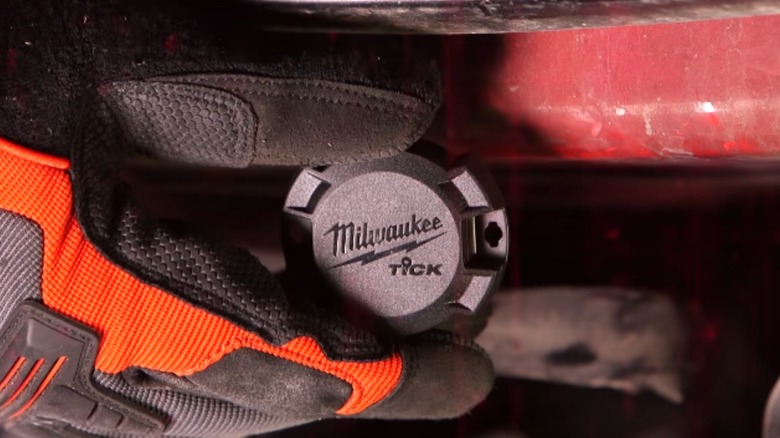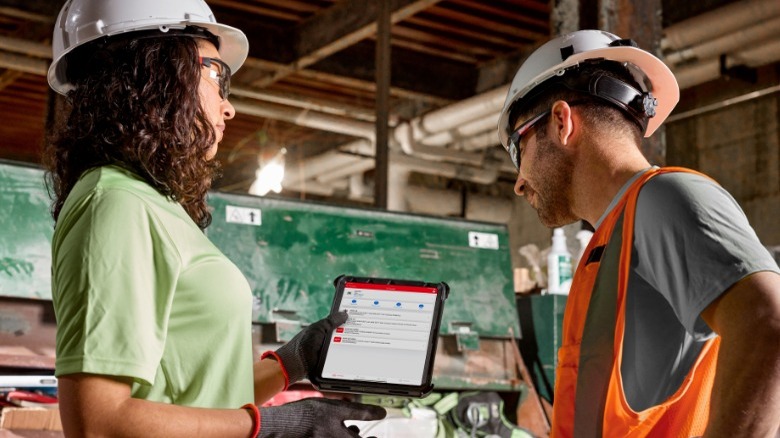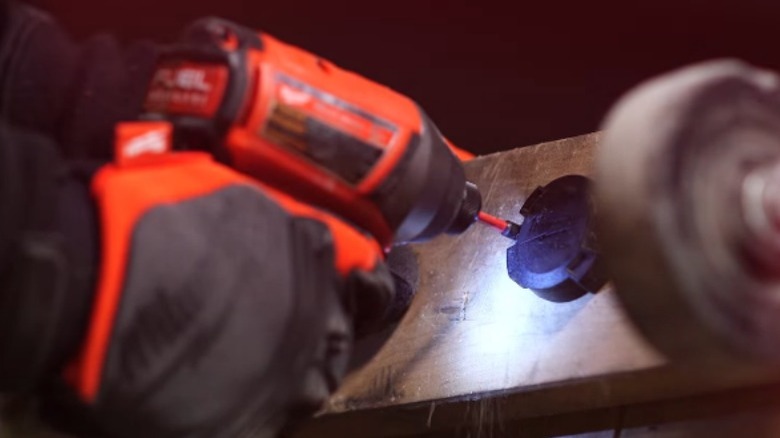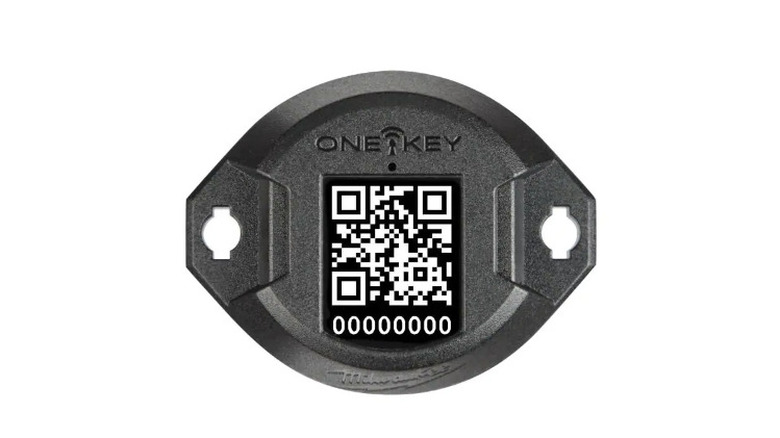Milwaukee One-Key Vs. Tick: What's The Difference Between These Bluetooth Trackers?
Milwaukee is one of the best power tool brands on the market, but there's no two ways about it, the company's products can be fairly expensive. Whether you're a home DIYer or a professional contractor, anyone who invests money to build even a moderately sized collection of these tools is going to want to be sure that they aren't going to lose any of them. A good locking truck toolbox can go a long way toward protecting your equipment from being stolen, but it isn't a sure thing. It also won't protect you if you absentmindedly leave something at a job site only to return and discover that it's nowhere to be found. That's where digital tracking comes into play.
There are a lot of different tracking systems out there and they can work in a couple of different ways. Some of them might be built into the product while others might be made from separate tags. Some might relay their position to a GPS app, while others might simply beep loudly to make it easier for you to find them if they're misplaced. Milwaukee itself actually makes a couple of different equipment tagging systems for its tools: One-Key and Tick. These aren't simply two different product lines that perform the same task, though. There are several key differences between them. You might be considering investing in one of these systems. If so, you'll probably want to know what these major differences are.
One-Key is a complete tool tracking network
Those who are interested in getting a complete tracking system for their Milwaukee power tools will definitely want to get the One-Key app. This is a cloud-based connectivity platform for job site management and tool tracking that you can control and monitor from any smart device.
This app allows you to catalog One-Key-compatible products in your personal database, helping you track the tools at your disposal and also providing an encyclopedic breakdown of each tool's features and capabilities. The app even records purchase information, performance reports, status reports, and maintenance schedules, so you can track the tool's condition as well as its location. Larger businesses can also assign cataloged tools to people, vehicles, or job sites to keep track of where these tools are supposed to be.
But the most valuable feature that One-Key offers is probably the virtual tool tracking. This app automatically updates the locations of tools any time they are within range of a smart device that has the app-enabled. You can use this to report the tool stolen on the app as well. You will then be notified of its location as soon as it comes within range of any device that has the app downloaded. You can even remote-lock the tool so that it can't be used until you get it back. This doesn't help with tools and products that don't have One-Key tracking built-in, however.
Tick is a line of attachable tags
Say you have a ladder or some other piece of equipment that doesn't come with One-Key tracking built into it, but you still want to be able to track it using the One-Key app. That's when you would go out and get yourself a Milwaukee Tick tool and equipment tracker. These are small Bluetooth tracker tags that are designed to be attached to tools and equipment so that you can monitor them just like any other part of the One-Key system. According to Milwaukee's product description, "With multiple attachment options and a low profile design, users can glue, screw, rivet or strap the TICK on anything." Once they are attached, you can add these tags to your One-Key database and then use the system to track them any time they are within a 100-foot range of any smart device that has the app. This makes them especially useful for tracking detachable supplementary parts like the M12 and M18 batteries.
In terms of the actual tags construction, Milwaukee put a lot of thought into making sure that they were fairly durable. The manufacturer knows that jobsite tools can go through the wringer, so the Tick tags are meant to stand up in harsh environments. They are rated to resist weather, water, and dust. They're powered by an internal 3V Lithium-Ion Coin Cell which typically lasts about a year before it needs to be replaced. Some advancements have been made since these were first launched, however.
One-Key now has better tracking tags
Unfortunately, it seems that there are still a few things that some customers don't seem to like about the Tick tags. While they do thoroughly expand the capabilities of the One-Key system, there are some aspects of how they are used that consumers have found irritating–particularly when it comes to connectivity. Milwaukee has acknowledged this, stating that "connecting via Bluetooth with a Tick—manually getting the Tick open, pulling the battery out, waiting 10 seconds, putting it back in—can be frustrating, especially if you experience a syncing error and need to repeat the whole process again."
In response to these complaints, and the growing demand for tool-tracking technology, Milwaukee has released a new line of tracking tags that have simply retained the One-Key branding. These essentially work the same way as the Tick tags, but there are several new features. Their range has been extended to 300 feet, and they now have a built-in speaker to make the tag ring (within 50 feet) so you can find it easier, they have a built-in accelerometer which lets anyone monitoring the app know the last time a tool was used, they are 30% smaller, and the battery now has a three-year run-time. To combat users' connectivity frustrations, Milwaukee has also "Added built-in NFC, as well as a scannable QR code with the same durability seen in our Asset ID Tag, which offers a simple 2-step activation process." This means you won't have to take the battery out to pair the tag with the app anymore.



